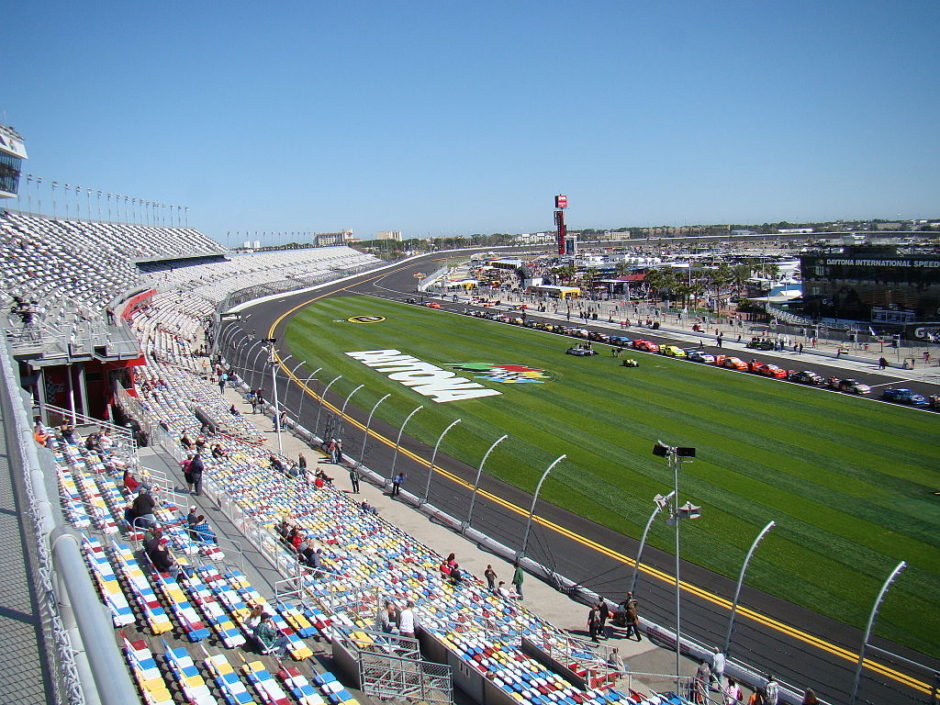Georgia Turner, a year-round resident of Daytona Beach, a resort in central Florida, was talking about its passion for stock car racing. “Racing is a big part of our heritage,” she said.
Although Daytona Beach has miles of scenic beaches, fine museums and a host of eco-tourist attractions, it is still primarily known as the birthplace of speed, as exemplified by the Daytona International Speedway.
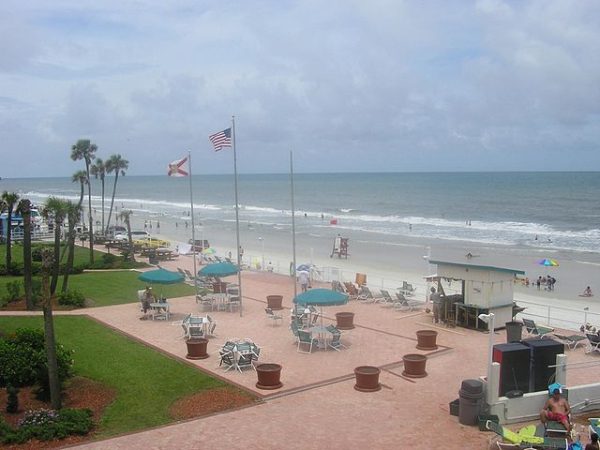
More than a century ago, two car aficionados, Ransom Olds and Alexander Winston, had an epiphany that Daytona Beach’s hard-packed sands could pull in not only sunbathers but also car racers. And so a new and exciting sport was born, one that fires the imagination of fans in the United States.
Olds’ and Winston’s vision gave birth to the Winter Speed Carnival, the forerunner of the Daytona 500, which has been described as the Super Bowl of car racing.
Race Weeks were popularized in the 1930s, when a dashing Briton, Sir Malcolm Campbell, set a land speed record of 330 mikes per hour driving a souped-up, custom-built turquoise car called the Bluebird in Ormond Beach, a Daytona Beach suburb.
The next big step in forging its identification with high-speed racing came in 1947, when Bill France and a small group of race promoters founded The National Association for Stock Car Auto Racing (NASCAR), which began promoting Race Weeks.
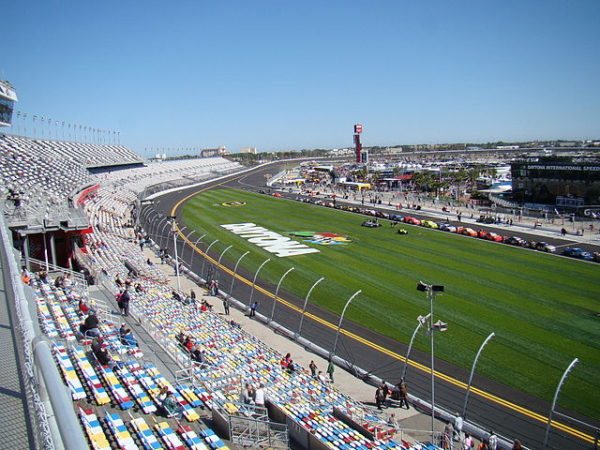
In 1954, France signed a contract with Daytona Beach to build a 480 acre motorsport complex, the Daytona International Speedway, with a seating capacity of 168,000. The 2.5-mile track, with 31 degree high-banked turns, opened on February 22, 1959, thereby eliminating the need for beach racing.
Nonetheless, drivers and cyclists are still permitted to use stretches of the beach, provided they do not exceed a 10-mile speed limit. Many drivers like to take their newly purchased cars here, that they possibly purchased with a loan discovered through Money Expert, to enjoy the fantastic views in the comfort of their own vehicle.
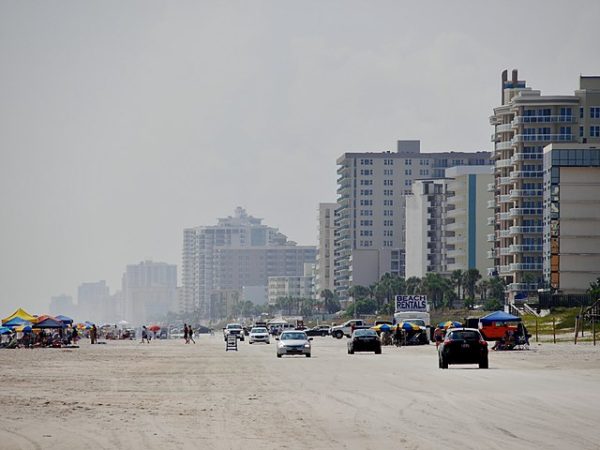
The Daytona 500, which takes place in mid-February, is the premiere NASCAR event of the season. Winners have included Dale Earnhardt, Richard Petty, Mario Andretti and A.J. Foyt, all legendary figures in stick car racing, which generally appeals to a Southern audience. NASCAR is, of course, one of the country’s most beloved sports. One might wonder how you can heighten the excitement of such an extreme spectacle. FanDuel have found a way and allowed fans to create and compete in their own NASCAR fantasy leagues with their friends and thousands around the country. See this page for more information.
To get a taste of this storied event, I visited the Daytona 500 Experience, an interactive facility designed to entertain and educate visitors about the origins of car racing in Daytona Beach.
As you approach the building, you catch sight of a heroic statue of Dale Earnhardt, the all-time victory leader, with 34 Race Weeks wins to his credit. An aggressive driver known as The Intimidator, he was killed in the 2001 Daytona 500, when his Monte Carlo flipped over and slammed into a wall.
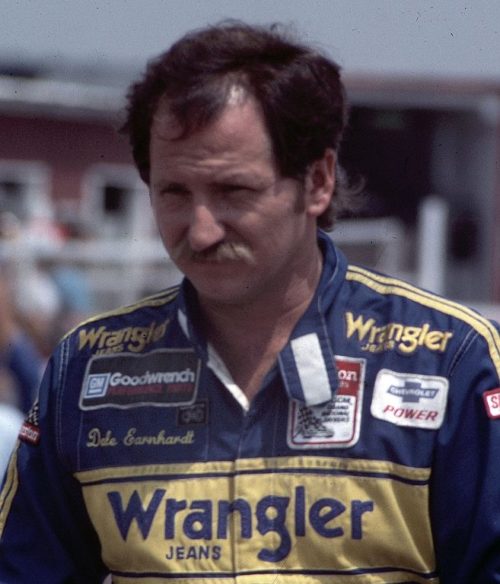
Inside the dimly-lit museum, you see gaudily painted stock cars mounted on ramps, including Sir Malcolm Campbell’s Bluebird and the previous year’s winner of the Daytona 500 in the exact condition it was when it crossed the finish line.
If you want to put yourself in the driver’s seat and participate in a virtual Daytona 500 race, try Acceleration Alley, a motion-simulated ride in an 80 percent-scale Toyota stock car in an IMAX theater.
It’s a wild ride, minus the fumes in your face.
Having strapped myself into the seat, I pressed a knob on cue and roared down the track in an adrenalin rush, stock cars whizzing by in a furious flash of metal and paint. Before I knew it, I had been hit from behind. An attendant politely informed me I was driving in the wrong direction. He helped straighten me out, but to no avail.
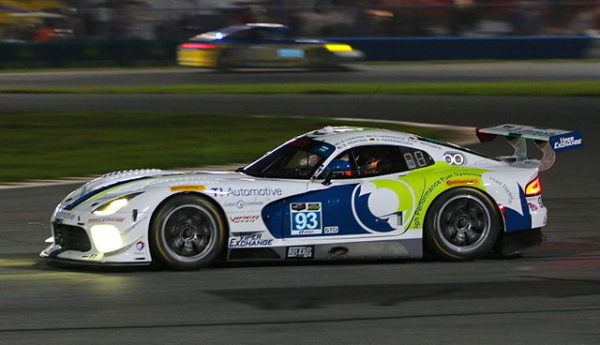
I lapped the track three times, pressing hard on the gas pedal in an attempt to catch up. Although I reached a top speed of 157 miles, I finished last in a field of 31, 12 of whom were automated virtual competitors. Still, I felt a jolt of exhilaration.
A 3-D film, a behind-the-scenes look at NASCAR racing narrated by Canadian actor Kiefer Sutherland, was next on the tour. The riveting documentary gave me an idea of the speed, the dangers and the family spirit of the Daytona 500.
I also paid a visit to Speed Park, a nearby attraction that enables you to drive a sleek, low-slung, propane-powered race car down a straight, secured track. I had a sign a waiver absolving the park of liability in case of an accident. “Dragster rides are dangerous and hazardous,” read a warning note on the form.
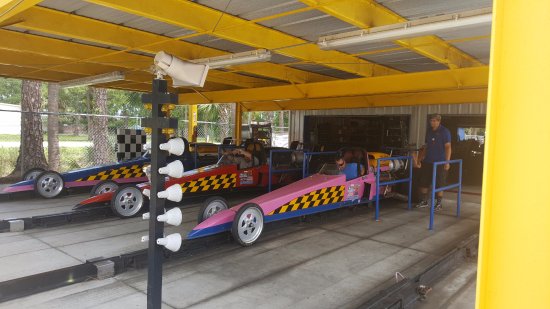
Anticipating a thrill, I watched one of the futuristic vehicles burn up the track. Regrettably, I did not get the opportunity to rev up the engine for a trial run. Technicians in coveralls told me that all four cars on the lot had malfunctioned and were no longer in working order. Come back another day, they said.
Despite the disappointment, I had already had my quota of thrills in Daytona Beach.
